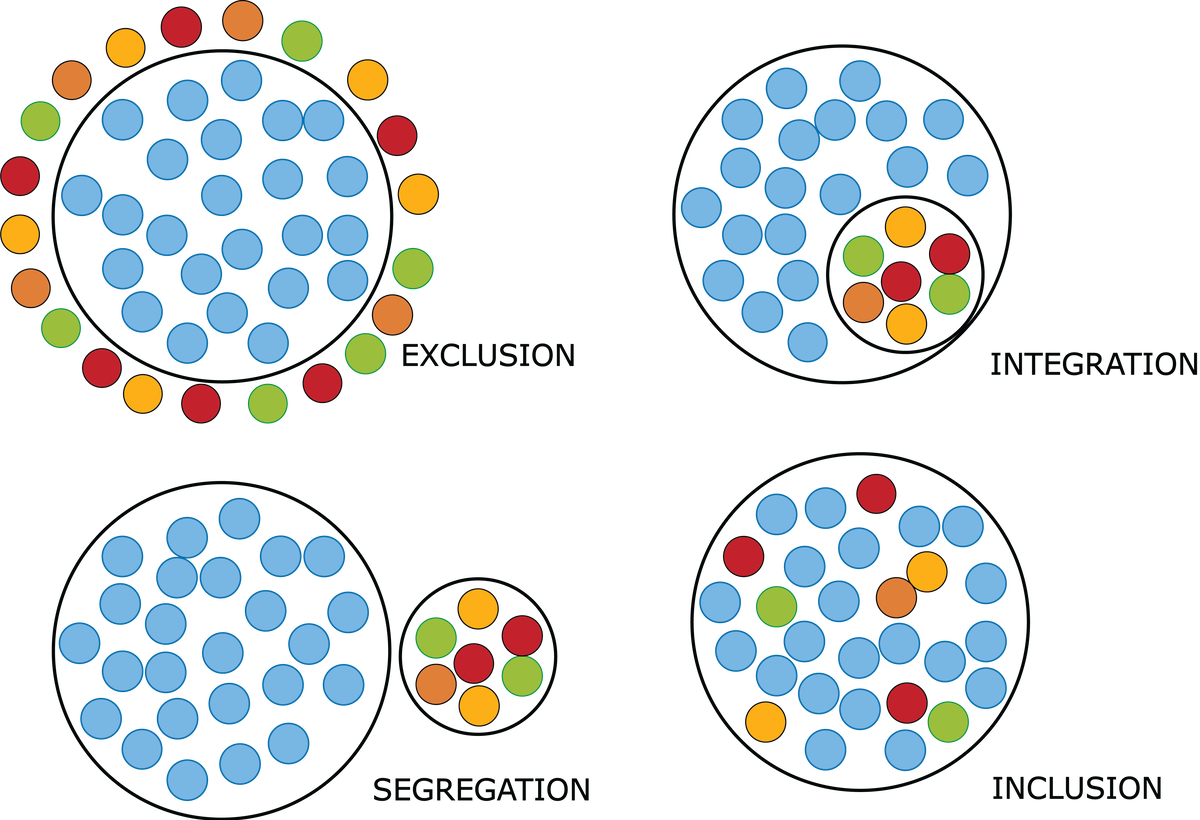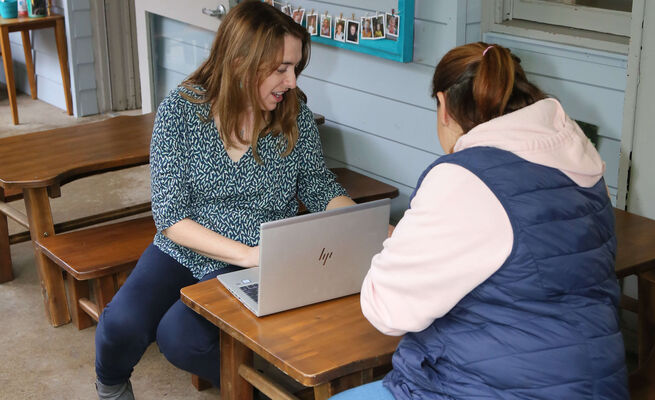Defining Inclusion
The range of children's experiences of early childhood education
Educational experiences for children with disabilities can be defined as broadly fitting within four categories:
Exclusion is when a child is directly or indirectly prevented from or denied access to any aspect of an early childhood education program. Exclusion may occur when a child is refused enrolment due to their needs and abilities. Exclusion also occurs when a child is deliberately or unintentionally excluded from experiences within a service as a result of their needs, abilities, or background.
Segregation is when a child with a disability is provided with any aspect of education in a separate environment to respond to a specific developmental need. In a segregated model, children are grouped according to their abilities. The children may attend the same educational setting but spend time separated into different environments or groups according to their abilities.
Integration is the when children with disabilities attend in existing mainstream education settings alongside typically developing peers. It is when adaptations or services are provided to help a child fit into an existing educational setting (rather than adapting the setting to meet the needs of every child). In an integrated model, children may be present but not always actively participating in the program.
Inclusion is when access and meaningful participation occurs for children of all abilities. Inclusion happens when every child is viewed as capable, competent and their contributions are valued. There is an understanding that children's learning needs differ and a responsiveness within the program to those differences. Strategies to adapt and improve the inclusive preschool setting and remove barriers to participation, are used to benefit all children. In a truly inclusive model, all children, families and educators feeling a genuine sense of belonging to the preschool and its community.
The key difference between integration and inclusion is the emphasis on helping the child to adapt to the program versus adapting the program and environment to meet the needs of the child.

The image used above is adapted with permission from ABT Associates and Instituto Alana, 2016. A Summary of the Evidence on Inclusive Education. Retrieved from
https://alana.org.br/wp-content/uploads/2016/12/A_Summary_of_the_evidence_on_inclusive_education.pdf
Examples of practice across categories
| Exclusion | Segregation | Integration | Inclusion | |
|---|---|---|---|---|
| Group time | Exclusion Child does not participate in group time. |
Segregation Child attends a separate group time with children with additional needs. |
Integration Child sits beside an additional educator for 1:1 support and is redirected to the group if their behaviour is disruptive or attempting to leave the group. Child may not engage in the group activities but is physically present at the group. |
Inclusion Groups are planned to support all children to participate meaningfully with their peers. All children have opportunities to participate in small group times. Educators support all children to enter, participate and leave group as needed. All educators involved in the group provide support to all children. |
| Excursion | Exclusion Child is not permitted to attend the excursion. |
Segregation Child attends the excursion with their parent accompanying them for support. They are taken to and from the excursion by their parent while other children travel with educators and peers. |
Integration Child attends the excursion and an educator shadows them, providing 1:1 support. The child may not be involved in all aspects of the excursion. |
Inclusion Child attends the excursion with their peers. All children are in small groups with an educator. All educators maintain awareness of the child and are available to provide support as needed, but the child is fully included in a group alongside peers. All educators work as a team to support all children to participate. |
| Visual supports | Exclusion Visual supports are not used at the preschool. |
Segregation Visual supports are only used with specific children with disabilities and implemented by a designated additional educator. |
Integration Visual supports are used with children with disabilities in contexts alongside their peers. |
Inclusion Visual supports are used by all educators with all children and their use is embedded across all aspects of the program. |
Unpacking inclusion at your preschool - reflective questions
- What are my beliefs about inclusion?
- How can we respectfully challenge ourselves and others around our values and beliefs about inclusion?
- How do we know if our practices are inclusive of every child?
- How do we learn about each child’s knowledge, strengths, ideas, culture, abilities and interests?
- How do we make decisions about children’s daily experiences and routines, and who is involved in making these decisions?
- How do we support every child’s participation in the program?
National Quality Standard links for the content on this page
QA1 Educational Program and Practice
- 1.1.3 Program Learning opportunities
- 1.3.2 Critical Reflection
QA6 Collaborative Partnerships with families and communities
- 6.2.2 Access and participation
QA5 Relationships with Children
- 5.1.2 Dignity and Rights of the child

